 February 21, 2019 John E. Ross, KD8IDJ, Editor
| ||||||
Brief ARRL Website Outage Planned for Wednesday, February 27 Some services on the ARRL website may be interrupted briefly on Wednesday, February 27, sometime between 1100 UTC and 1300 UTC. This outage is to accommodate a hardware test of the existing failover system for all systems behind the Rackspace firewall. Affected systems are the main website, including the ARRL Store and contesting-related pages. Logbook of The World (LoTW), email, and all other Headquarters services will not be affected. We apologize for any inconvenience. New Plan Aligns ARES with the Needs of Served Agencies The new ARES Plan adopted by the ARRL Board of Directors at its Annual Meeting in January represents an effort to provide ARES with a clearly defined mission, goals, and objectives; specific training requirements, and a system for consistent reporting and record-keeping. The Board's Public Service Enhancement Working Group (PSEWG) spent more than 3 years crafting the ARES Plan which, ARRL officials believe, provides a much-needed update of the "If we didn't address these issues, such as training standards and organizational management, ARES faced the very real possibility that it would no longer be viewed as a valid and valuable partner in emergency and disaster relief situations," Williams said. With input from ARES members and a peer review team, and the assistance of emergency response officials with some partner organizations, the PSEWG came up with a plan that provides guidelines to ensure that ARES remains a service of organized, trained, qualified, and credentialed Amateur Radio volunteers who can provide public service partners with radio communication expertise, capability, and capacity, Williams added. Training requirements in the final ARES Plan consist of the free FEMA Professional Development Series of independent study (IS) courses, as well as the ARRL's EC-001 and EC-016 emergency communication courses. The ARRL Board approved a proposal to make the ARRL EC courses free for ARES members.
The ARES Plan outlines a three-tiered membership structure based on increased responsibility levels and accompanying training requirements. The optional tiered system serves to define three distinct ways to participate in the ARES program, leaving it up to participants to determine their level of involvement. The ARES Plan points out that public service events such as parades and marathons are within the realm of ARES activity and are an integral part of effective training. The Plan notes that training requirements are ultimately the responsibility of the Section Manager, with each SM approving training for local ARES teams, as local conditions and needs dictate.
The ARES Plan also highlights the relationship between ARES and the National Traffic System (NTS). Williams noted that, within the ARES structure, the Emergency Coordinator (EC) will continue to lead the ARES team locally during an incident, while the District and Section Emergency Coordinators will continue to serve as resources and support for the EC. The ARES Plan stresses that ARES participants are not first responders, and it encourages ARES leaders to develop and grow their group's partnerships with state emergency management agencies and officials. Williams said the adoption of the ARES Plan is not the end of this process. "ARES cannot remain stagnant only to be updated once every few generations," he said. "The ARES Plan, and the ARES program, must be able to evolve." Williams added that the ARRL Headquarters emergency preparedness staff will review the program annually to ensure its continued relevance. Read more. Winter Section Manager Election Results Announced Four new ARRL Section Managers have been declared elected in the just-concluded winter election cycle, and one incumbent Section Manager was re-elected to a new term. Section Manager election ballots were counted on February 19 at ARRL Headquarters. Four incumbent Section Managers ran without opposition during this election cycle. All terms start on April 1.
In North Texas, Steven Lott Smith, KG5VK, who lives near the town of Ben Franklin, received 714 votes to 576 for Ken Mitchell, KD2KW, of Oak Point. He has been president of the Key City Amateur Radio Club in Abilene, and of the Shreveport Amateur Radio Association in Louisiana. Smith will pick up the reins from Jay Urish, W5GM, who opted not to run for a new term after serving for the past 2 years. In Arizona, Richard A. Paquette, W7RAP, of Tucson, was re-elected to a second term with 817 votes to 502 votes for his opponent Virgil Silhanek, K7VZ, of Phoenix. In Idaho, Dan Marler, K7REX, of Boise, will officially take over the leadership of the Idaho Field Organization from Ed Stuckey, AI7H, on April 1, who chose not to run for a new term after serving as Section Manager for more than 10 years. Marler has been an Assistant Section Manager and was the only nominee after the position was re-solicited last fall. Wyoming will welcome Rick Breininger, N1TEK, of Green River, as its new Section Manager on April 1. He was the only nominee for the position after Jack Mitchell, N7MJ, announced that he would not run for a new term after serving since 2015. Breininger has been a Public Information Officer and Local Government Liaison in Wyoming. These incumbent Section Managers were unopposed for re-election: James Ferguson, N5LKE (Arkansas); Steve Morgan, W4NHO (Kentucky); Malcolm Keown, W5XX (Mississippi), and Carl Gardenias, WU6D (Orange). The Doctor Will See You Now! "Are We Entering a Maunder Minimum?" is the topic of the latest (February 14) episode of the "ARRL The Doctor is In" podcast. Listen...and learn!
Every 2 weeks, your host, QST Editor-in-Chief Steve Ford, WB8IMY, and the Doctor himself, Joel Hallas, W1ZR, will discuss a broad range of technical topics. You can also email your questions to doctor@arrl.org, and the Doctor may answer them in a future podcast. Enjoy "ARRL The Doctor is In" on Apple iTunes, or by using your iPhone or iPad podcast app (just search for "ARRL The Doctor is In"). You can also listen online at Blubrry, or at Stitcher (free registration required, or browse the site as a guest) and through the free Stitcher app for iOS, Kindle, or Android devices. If you've never listened to a podcast before, download our beginner's guide. Just ahead: "The Raspberry Pi Computer." New Book, HF Dipole Antennas for Amateur Radio, Now Shipping ARRL's HF Dipole Antennas for Amateur Radio is a collection of 20 HF dipole antenna designs from the pages of QST between 2000 and 2017. It includes innovative antenna projects for single-band and A special bonus section by Jackson R. Richter, WB0USA, features a thorough discussion of how these popular multiband antennas function. It includes several antenna projects that you can build. HF Dipole Antennas for Amateur Radio is available from the ARRL Store or your ARRL Dealer. (ARRL Item no. 0994, ISBN: 978-1-62595-099-4, $22.95 retail, special ARRL member price $19.95.) Call 860-594-0355 or toll-free in the US, 888-277-5289. It will also be available as an e-book for the Amazon Kindle. ARRL Headquarters Seeks Radiosport and Field Services Manager ARRL is accepting applications for the position of Radiosport and Field Services Manager at ARRL Headquarters in Newington, Connecticut. This is a full-time, exempt position with a competitive salary. The successful candidate would be responsible for managing the This individual works in conjunction with executive officers to establish annual operational plans, revenue forecasts, and budgets for the department and manages to those goals; manages Logbook of The World (LoTW) operations, including staff supervision, analysis of user issues, and problem resolution; serves as liaison with the ARRL Field Organization, including the Amateur Radio Emergency Service (ARES) and the National Traffic System (NTS); oversees the election and appointment of Section Managers and other official ARRL field volunteers, and directs ARRL's emergency preparedness and response activities. For full requirements and additional details, see the Employment Opportunities listing. The K7RA Solar Update Tad Cook, K7RA, Seattle, reports: The 3-week-long absence of sunspot activity continues, and the average daily solar flux was only marginally higher over the February 14 - 20 reporting week, moving from 70.4 to 70.6. Geomagnetic indicators were lower, with the average daily planetary A index declining from 8.1 to 4.9, and the average daily mid-latitude A index dropping from 6.1 to 3.9.
The current 45-day outlook for solar flux shows predicted values below 70 -- for the first time in a few weeks -- from March 1 - 10 and again on March 26 - April 6. Predicted planetary A index is 16, 10, and 8 on February 21 - 23; 5 on February 24 - 26; 15, 18, 18, 12, and 8 on February 27 - March 3; 5, 8, 5, 8, 10, and 8 on March 4 - 9; 5 on March 10 - 11; 12 and 10 on March 12 - 13; 5 on March 14 - 17; 12, 16, 12, and 8 on March 18 - 21; 5 on March 22 - 25; 15, 18, 18, 12, 8, and 5 on March 26 - 31; 8, 5, 8, 10, 8, and 5 on April 1 - 6. Sunspot numbers for February 14 - 20 were 0, 0, 0, 0, 0, 0, and 0, with a mean of 0. The 10.7-centimeter flux was 71.4, 70.9, 70.7, 70.1, 69.9, 70.2, and 71, with a mean of 70.6. Estimated planetary A indices were 10, 4, 3, 4, 7, 3, and 3, with a mean of 4.9. Estimated mid-latitude A indices were 8, 4, 3, 3, 5, 2, and 2, with a mean of 3.9. A comprehensive K7RA Solar Update is posted Fridays on the ARRL website. For more information concerning radio propagation, visit the ARRL Technical Information Service, read "What the Numbers Mean...," and check out K9LA's Propagation Page. A propagation bulletin archive is available. Monthly charts offer propagation projections between the US and a dozen DX locations. Share your comments, reports and observations. Testing Jig Eases Job of Measuring Junk Box Resistors
Just Ahead in Radiosport
See the ARRL Contest Calendar for more information. For in-depth reporting on Amateur Radio contesting, subscribe to The ARRL Contest Update via your ARRL member profile email preferences. Amateur Radio is Aboard During Attempt to Become Oldest Circumnavigator Jeanne Socrates, VE0JS/KC2IOV, is used to solitude. The 76-year-old yachtswoman passed some 300 miles to the south of the southern tip of Africa on Valentine's Day as she forged on toward Australia and New Zealand in her 38-foot sailing vessel Nereida. While underway, Socrates keeps in touch with a community of friends via Amateur Radio -- although she had to yield to the ARRL International The retired math teacher and UK native also is no stranger to circumnavigating the globe, having already become the oldest woman to complete a solo, non-stop, unassisted round-the-world voyage. Ham radio served as her link to terra firma during her earlier adventures. Since 2013, she's made two unsuccessful attempts to become the oldest person to circumnavigate Earth, the goal she's now attempting to achieve. Socrates departed Vancouver, British Columbia, last October. Read more. -- Thanks to Southgate Amateur Radio News for some information KickSat-2 is Alive and Being Tracked, Sprites Deployment Pending For the first couple of days after the 3U KickSat-2 was deployed from Cygnus NG-10 last November, nothing was heard from the satellite. But in a February 16 post to AMSAT-BB, Nico Janssen, PA0DLO, reported receiving several short and weak transmissions from KickSat 2 -- short telemetry bursts on 437.5077 MHz. Stanford University Assistant Professor of Aeronautics and Astronautics Zac Manchester, KD2BHC, is the principal investigator for the KickSat project, which NASA adopted as an official technology demonstration mission.
KickSat-2 may deploy up to 104 tiny Sprite satellites into low-Earth orbit. The Sprites then would transmit on 437.240 MHz at 10 mW, communicating with each other via a mesh network and with command stations on Earth. The Sprites would reenter Earth's atmosphere within weeks. As for releasing the Sprites, Manchester told ARRL, "We're working on it... Stay tuned." Recently, the FCC imposed a $900,000 penalty on a commercial concern, Swarm Technologies, for launching similar tiny satellites after the FCC had denied permission. "These spacecraft are...below the size threshold at which detection by the Space Surveillance Network can be considered routine," the FCC told Swarm Technologies.
A 2018 NASA Early Career Faculty Award recipient, Manchester had been trying without success to convince the FCC to allow him to deploy the Sprites from KickSat-2, but the agency denied permission at the last moment. Once NASA adopted KickSat-2 as its own mission, however, the applicable regulatory body shifted to the National Telecommunications and Information Administration (NTIA), and the launch went forward. In the Swarm Technologies proceeding, the FCC argued that satellites smaller than 10 centimeters on any side were too small. KickSat-2's Sprites are 3.5 centimeters on a side and just 0.2 centimeters thick. Read more. Microsoft Windows 10 Upgrade Will Ease Access to Linux Files
"In the past, creating and changing Linux files from Windows resulted in losing files or corrupting data," Microsoft program manager Craig Loewen said in a blog post. The WSL allows Windows 10 to run various GNU/Linux distros inside Windows as Microsoft Store apps, providing access to Ubuntu, openSUSE, Debian, Fedora, Kali Linux, and others. Files can also be opened by Windows 10 applications by right clicking and using the "Open with..." option. The team behind WSL says it's working to make WSL files discoverable by File Explorer when the WSL distro is not running. XX9D in Macau: And You Think Your Noise Problem is Bad The group that's been activating Macau as XX9D since February 11 reports its biggest challenge is not so much managing the pileups but hearing the pileups in the first place due to high noise levels. Nonetheless, the group has managed some 18,000 contacts on 160 through 6 meters, and the operators credit FT8 with making many of those possible.
On 160, 80, and 40 meters, XX9D is using wire verticals with elevated radials. The 30-meter antenna is a delta loop, and on 20 - 10 meters, the antenna is a wire beam. No receive antennas are possible. "We are working hard to get as many...callers in the log [as possible]. Because of the lousy conditions we work much more in FT8," the 15-person, mostly German team said. The DXpedition continues until February 26. Read more. World Scout Jamboree is Possible ARISS Amateur Radio Contact Host The Amateur Radio on the International Space Station US team (ARISS-US) has announced the list of schools or organizations that may host Amateur Radio contacts with International Space Station Schools and organizations had submitted proposals seeking an opportunity to host contacts, and a review team of teachers from the ARISS-US Education Committee selected from among those submissions. Applicants chosen will advance to the second phase of the selection process -- developing an Amateur Radio equipment plan to host a scheduled ARISS contact. ARISS's primary goal is to engage young people in science, technology, engineering, and math (STEM) activities, and involve them in pursuits related to space exploration, Amateur Radio, communication, and associated areas of study and career options. Read more.
Upcoming ARRL Section, State, and Division Conventions
Find conventions and hamfests in your area.
. .
Subscribe to...
| ||||||
.jpg) program's role in public service and emergency preparedness in the 21st century. Concerns focused on bringing ARES into alignment with the National Incident Management System (NIMS) and Incident Command System (ICS), and creating more consistent and standardized ARES training requirements. Given dramatic changes and upgrades in national, regional, and local emergency and disaster response organizations, ARRL faced a major challenge, said ARRL Great Lakes Division Director Dale Williams, WA8EFK, who chaired the PSEWG.
program's role in public service and emergency preparedness in the 21st century. Concerns focused on bringing ARES into alignment with the National Incident Management System (NIMS) and Incident Command System (ICS), and creating more consistent and standardized ARES training requirements. Given dramatic changes and upgrades in national, regional, and local emergency and disaster response organizations, ARRL faced a major challenge, said ARRL Great Lakes Division Director Dale Williams, WA8EFK, who chaired the PSEWG.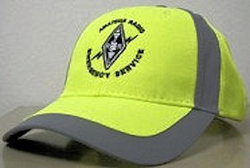 The plan highlights some additional training programs that ARES participants are encouraged to consider taking, but that are not required, such as AUXCOMM and training courses like ICS-300 and ICS-400.
The plan highlights some additional training programs that ARES participants are encouraged to consider taking, but that are not required, such as AUXCOMM and training courses like ICS-300 and ICS-400.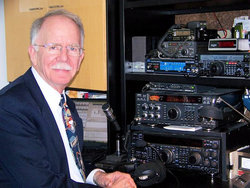
 In Iowa, Lelia Garner, WA0UIG, of Robins, received 315 votes to 234 for her opponent, Paul Cowley, W0YR, of Ames. Garner is the Iowa Section Traffic Manager and co-founder of the Linn County New Ham Net. She will succeed Bob McCaffrey, K0CY, who served as Section Manager for the past 6 years and decided not to run for another term.
In Iowa, Lelia Garner, WA0UIG, of Robins, received 315 votes to 234 for her opponent, Paul Cowley, W0YR, of Ames. Garner is the Iowa Section Traffic Manager and co-founder of the Linn County New Ham Net. She will succeed Bob McCaffrey, K0CY, who served as Section Manager for the past 6 years and decided not to run for another term. Sponsored by
Sponsored by 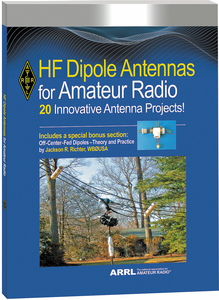 multiband antennas, as well as antennas for portable applications.
multiband antennas, as well as antennas for portable applications.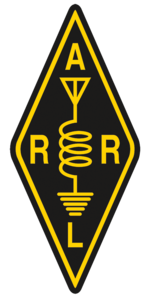 Radiosport and Field Services functions, including employee training and program and services delivery to members and field volunteers.
Radiosport and Field Services functions, including employee training and program and services delivery to members and field volunteers.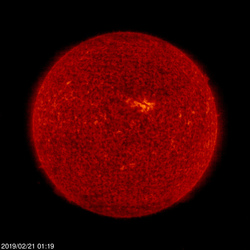 One advantage at the bottom of the solar cycle is less geomagnetic activity, which benefits propagation on 160, 80, and 60 meters. The ARRL Contest Update this week
One advantage at the bottom of the solar cycle is less geomagnetic activity, which benefits propagation on 160, 80, and 60 meters. The ARRL Contest Update this week 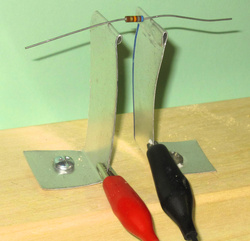 Paul Danzer, N1II, was faced with sorting a box of 100 old resistors to verify their approximate values. The idea of attaching digital multimeter clip leads to each resistor 100 times was not very appealing. His solution was to build a fixture from thin sheet aluminum. Each leg is approximately 1 inch wide, and the tops are bent over to eliminate any sharp edges. The meter leads are clipped to each leg. To measure a resistor, all you have to do is lay it across the two legs. If the connection seems a little less than solid, a bit of finger pressure applied to the resistor might help. Quick and easy!
Paul Danzer, N1II, was faced with sorting a box of 100 old resistors to verify their approximate values. The idea of attaching digital multimeter clip leads to each resistor 100 times was not very appealing. His solution was to build a fixture from thin sheet aluminum. Each leg is approximately 1 inch wide, and the tops are bent over to eliminate any sharp edges. The meter leads are clipped to each leg. To measure a resistor, all you have to do is lay it across the two legs. If the connection seems a little less than solid, a bit of finger pressure applied to the resistor might help. Quick and easy!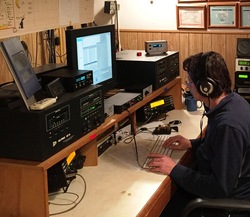 February 23 - 24 --
February 23 - 24 -- 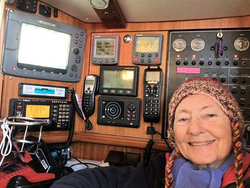 DX CW activity last weekend -- and she's sticking to a schedule of 7.160 MHz at 0230 UTC daily. Socrates reported making contact with some ham radio friends on the US west coast on February 17. She's been
DX CW activity last weekend -- and she's sticking to a schedule of 7.160 MHz at 0230 UTC daily. Socrates reported making contact with some ham radio friends on the US west coast on February 17. She's been  "Yes, KickSat-2 is alive," Manchester told ARRL. "We have been tracking it since Thursday, [February 14,] and have been able to decode at least some packets. The signal is weak, and we think the antenna did not properly deploy on the CubeSat."
"Yes, KickSat-2 is alive," Manchester told ARRL. "We have been tracking it since Thursday, [February 14,] and have been able to decode at least some packets. The signal is weak, and we think the antenna did not properly deploy on the CubeSat.".jpg)
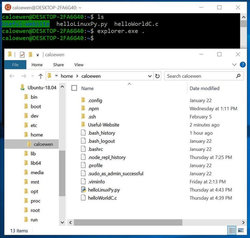 Microsoft plans to make it easier for Windows 10 to access files stored by some Linux-based operating systems. The next major Windows 10 update, version 1903, due in March or April, will allow Windows 10 File Explorer to access, move, and copy files stored inside Windows Subsystem for Linux (WSL) distributions -- or "distros" in the Linux world.
Microsoft plans to make it easier for Windows 10 to access files stored by some Linux-based operating systems. The next major Windows 10 update, version 1903, due in March or April, will allow Windows 10 File Explorer to access, move, and copy files stored inside Windows Subsystem for Linux (WSL) distributions -- or "distros" in the Linux world. "All team members are a little bit disappointed about the high noise level here on all bands," the XX9D team reported on February 18. Levels are mostly [around S-7 to S-9]. It seems that this is manmade noise, which is about 10 dB stronger between 5 PM and 7 AM. You might imagine what problems we have to identify call signs under these lousy circumstances, which we are not able to solve. So, we have to lower our expectations."
"All team members are a little bit disappointed about the high noise level here on all bands," the XX9D team reported on February 18. Levels are mostly [around S-7 to S-9]. It seems that this is manmade noise, which is about 10 dB stronger between 5 PM and 7 AM. You might imagine what problems we have to identify call signs under these lousy circumstances, which we are not able to solve. So, we have to lower our expectations."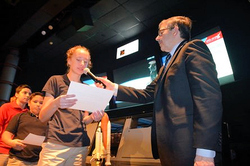 (ISS) crew members from July through December. The list includes the 24th World Scout Jamboree, which is set for this summer at the Summit Bechtel Reserve in West Virginia.
(ISS) crew members from July through December. The list includes the 24th World Scout Jamboree, which is set for this summer at the Summit Bechtel Reserve in West Virginia. The AMSAT 50th Anniversary Symposium will take place on October 18 - 20 at the Hilton Arlington in Arlington, Virginia, next to Washington, DC. Connected to the Ballston metro station, the hotel offers easy access to the capital's top tourist destinations, and tours will be available; it's 6 miles from Reagan National Airport. The AMSAT Board of Directors will meet on October 16 - 17. -- Thanks to AMSAT News Service
The AMSAT 50th Anniversary Symposium will take place on October 18 - 20 at the Hilton Arlington in Arlington, Virginia, next to Washington, DC. Connected to the Ballston metro station, the hotel offers easy access to the capital's top tourist destinations, and tours will be available; it's 6 miles from Reagan National Airport. The AMSAT Board of Directors will meet on October 16 - 17. -- Thanks to AMSAT News Service







